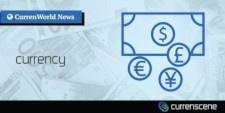Last week was filled with mixed market emotion. On the one hand, Wall Street[1] experienced its worst day since 1987 as equities entered a bear market. On the other hand, the S&P 500 and Dow Jones surged over 9% on Friday as President Donald Trump declared a national emergency on the coronavirus outbreak. That has opened the door to much needed federal aid.
What is clear is that the US Dollar[2] took its role as the world’s reserve currency, rising the most on average over 5 days since 2008. The premium for liquidity combined with rates plunging across major central banks did not bode well for anti-fiat gold prices[3]. XAU/USD[4] had its worst week since 2011. A price war triggered by Saudi Arabia plunged oil[5] prices in their largest drop since 1991.
The risk of volatility remains high with all eyes on stimulus measures from governments and central banks. With the U.S. Senate open during its recess, expect policymakers to push forward a relief bill. This is as futures markets almost expect 100-bp worth of easing from the Federal Reserve on Wednesday. Some easing is also anticipated from the Bank of Japan a day later.
Timing and expediency are arguably of the essence to prevent the coronavirus from both spreading and taking a large enough toll on economic growth. If done right, there could be scope for calm which risks pressuring the anti-risk Japanese Yen[6]. China will release industrial production and retail sales during a month when gauges of business activity dropped off a cliff. What else is next?
Fundamental Forecasts:
Euro Forecast: Outlook for EUR/USD Turns Bearish[7]
Last week’s failure by the ECB to cut Eurozone interest rates as most



